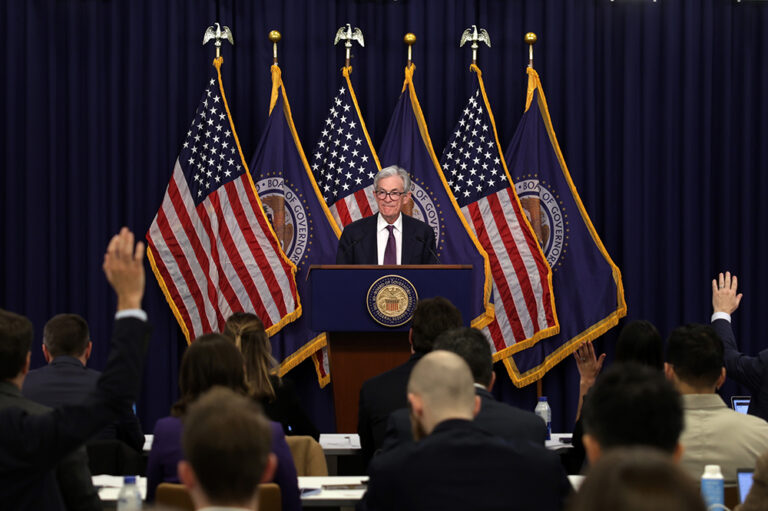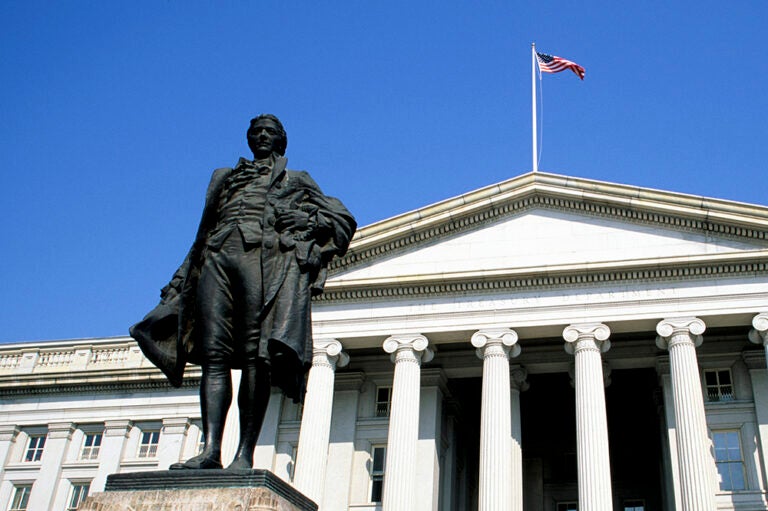The federal aid provided in response to the COVID-19 pandemic, estimated to cost about $5.3 trillion, has ignited a healthy debate among economists about whether that surge in government spending, combined with higher growth and lower unemployment, will lead to inflation. Defined as the rate at which the prices for goods and services increase across an economy, inflation is sustainable at low levels, but high and volatile inflation can stunt economic growth and erode purchasing power.
If inflation were to rise quickly, the Federal Reserve could act to contain it by raising interest rates from their current low levels, which would make borrowing more expensive and slow economic activity. However, raising interest rates to control inflation has sometimes led to economic contractions and even recessions. In addition, if interest rates were to increase in conjunction with higher inflation, there would be significant implications for our national debt.
Despite the consensus among economists that some amount of inflation is likely to occur in the near term, their level of concern varies. Some economists are not concerned because they expect inflation to either be temporary, and therefore not cause economic damage, or relatively low (i.e., around or slightly higher than the Federal Reserve’s 2 percent target). Other economists, however, are concerned about inflation, as they believe that a rise in prices may be more significant and sustained.
Below is a range of opinions from economists on the possible cause of inflation and when they would be concerned about it.
Some Economists Are Worried about Overheating Leading to Inflation
A number of economists have expressed concerns about a rise in prices. Two notable economists, Olivier Blanchard, the former chief economist of the International Monetary Fund and current senior fellow at the Peterson Institute for International Economics, and Larry Summers, an economist at Harvard University and former Treasury secretary, have been outspoken in their worries that the recent relief spending was excessive — potentially leading to an overheating economy and, therefore, inflation.
An economy typically overheats when it is operating beyond its sustainable level — when the nation’s real (inflation-adjusted) gross domestic product (GDP) exceeds potential GDP (an estimate of the economy’s maximum sustainable output). That overheating can put inflationary pressure on prices. Before the enactment of the $900 billion Response and Relief Act and the $1.9 trillion American Rescue Plan, the nation’s economy was operating below maximum sustainable levels by an estimated maximum of $900 billion (known as the output gap).
However, economists such as Blanchard have expressed concerns that the $2.8 trillion of funding through those two bills may be too much. If that relief boosts the economy by more than the output gap, it could cause demand and supply issues that lead to inflation. Summers also warned about the consequences of that amount of COVID relief, including the possibility that it may cause the Federal Reserve to raise interest rates in response to higher prices, thereby pushing the economy into a recession:
“I think there’s a one-third chance that inflation expectations meaningfully above the Fed’s 2 percent target will become entrenched, a one-third chance that the Fed will bring about substantial financial instability or recession in order to contain inflation, and a one-third chance that this will work out as policymakers hope.”
Blanchard and Summers also point to instances of inflation in the past as examples of the possible effects of high or volatile inflation arising as the COVID-19 pandemic wanes. Blanchard drew a comparison with the 1960s, when an overheating economy gradually increased inflation and the actions taken to control that inflation eventually led to a recession:
“A relevant comparison here is what happened in the 1960s…From 1961 to 1967, the Kennedy and Johnson administrations ran the economy above potential, leading to a steady decrease in the unemployment rate down to less than 4 percent. Inflation increased but not very much, from 1 percent to just below 3 percent, suggesting to many a permanent trade-off between inflation and unemployment. In 1967, however, inflation expectations started adjusting, and by 1969, inflation had increased to close to 6 percent and was then seen as a major issue. Fiscal and monetary policies tightened, leading to a recession from the end of 1969 to the end of 1970.”
Summers warned that if the Federal Reserve needed to tighten monetary policies — such as by drastically raising interest rates — to control high levels of inflation, the United States could witness a recurrence of such past situations:
“We [would] have an experience like most of the recessions prior to 1990, when expansions were murdered by the Fed with inflation control as the motive. This was the case three times in the 1950s, at the beginning of the 1970s, in 1975, 1980 and 1982. In the past it has proven impossible to generate a soft landing. I can’t think of a time when we have experienced a big downshift without having a recession.”
Other Economists Aren’t as Concerned about Lasting Inflation
Some economists don’t expect significant inflation, while others believe that a rise in inflation would be temporary and therefore not a concern. Jerome Powell, Chair of the Federal Reserve, shared the central bank’s perspective on inflation occurring due to the surge in COVID relief spending:
“Our best view is that the effect on inflation will be neither particularly large nor persistent. And part of that just is that we’ve been living in a world of strong disinflationary pressures — around the world really — for a quarter of a century. We don’t think that a one-time surge in spending leading to temporary price increases would disrupt that.”
Mary Daly, the President of the Federal Reserve Bank of San Francisco, pointed out that inflation actually fell at the beginning of the pandemic. Daly shared her thoughts on the likelihood that inflation will exceed the central bank’s 2 percent target:
“Inflation has also been pushed down by the pandemic. After falling sharply last year, it has improved as the economy has rebounded. But COVID-sensitive sectors remain a drag on overall inflation. And even when those sectors have fully recovered, it will likely be some time before inflation is sustainably back to 2 percent.”
Furthermore, Wendy Edelberg, Director of the Hamilton Project at the Brookings Institution and former Chief Economist of the Congressional Budget Office, indicated that if the economy overheats and inflation rebounds, it would likely be temporary and therefore wouldn’t cause concern:
“I think that [the temporary overheating of the economy] isn’t in and of itself problematic. In fact, I think making up for some lost economic activity is beneficial. And the Fed has said it welcomes a rebound in inflation.”
In fact, economists such as Julia Coronado, President of Macro Policy Perspectives and former economist at the Federal Reserve, would not be worried about inflation unless it persistently exceeds 3 percent over a long period of time — indicating we should focus on other aspects of the economic recovery instead:
“We would have to see the Fed’s preferred gauge of core PCE [Personal Consumption Expenditure] inflation sustained at a rate above 3 percent for several years and importantly matched by wage growth with measures of inflation expectations rising before I worry about the Fed losing its grip on its stable price mandate… I am more optimistic about the macro outlook than I have been in a long time and am far more focused on how quickly the labor market returns to health than any threat from inflation.”
Looking Forward
The level of concern varies among economists and generally depends on what level of inflation they think the United States will incur over the next few years. While some believe that the threat of inflation is pressing, others are more optimistic about the likelihood of inflation remaining tame.
While relief related to the pandemic has been necessary to get the economy back on track, excessive levels of inflation can be harmful. As the economy recovers, economists and policymakers will continue to monitor inflation to ensure the long-term health of the nation’s economy.
Image credit: Photo by Al Drago/Stringer/Getty Images
Further Reading
The Fed Reduced the Short-Term Rate Again, but Interest Costs Remain High
High interest rates on U.S. Treasury securities increase the federal government’s borrowing costs.
What Types of Securities Does the Treasury Issue?
Learn about the different types of Treasury securities issued to the public as well as trends in interest rates and maturity terms.
Experts Identify Lessons from History for America Today
A distinguished group of experts to evaluate America’s current fiscal landscape with an historical perspective.


